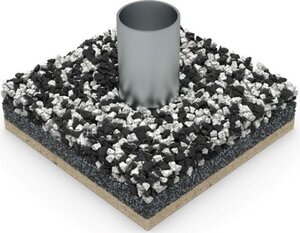Machines
Design of autonomous transshipment concept for inter-terminal barge operations
Due to the increasing demand on maritime trade, the need for automated technologies are on the rise as well. To improve the overall process taken to handle a container, minimise the turnaround time, and reduce the faults that occur due to manual handling, extraordinary expectations are placed on automation technologies.
This project would aim to design and prototype a novel machine that can be scaled up and be used to implement the Kiss and Ride concept onto container handling. To achieve this, a new concept design would be thought of which would have dedicated equipment for loading and unloading of the containers from the autonomous barges or AGVs. The parameters that are needed when designing the machine are modelling tools, prototyping tools and testing scenarios which will be carried out in order to produce the needed machines. Identification of materials needed for the prototyping would also be evaluated and documented along the course of the program.
In ensuring the development of terminal approaches and transshipment, a novel concept which would ensure instantaneous and autonomous loading or unloading barges of a small scale. Using the Kiss and Ride concept a seamless integration of the system within daily terminal operations is to be achieved. To ensure that the use of barges for the transportation of containers to hinterland ports an autonomous system is to be created which would load and unload containers between barges and automated guided vehicles on land.
Optimising Pile Installation through Scour protection (OPIS)
Scour protection is commonly installed around monopile foundations of offshore wind farms to prevent loss of soil support due to scour erosion. The conventional practice involves a three-step scour protection installation process: (i) placing a filter layer composed of smaller rocks, (ii) installing the monopile through the filter layer, and (iii) positioning the armour layer of larger rocks on top. This workflow requires multiple visits of the rock dumping vessel to the site which increases costs, time spent offshore by the vessels, and consequently carbon emissions.
A 3-year joint industry project, Optimizing Pile Installation through Scour Protection (OPIS), has been established in 2023 to streamline the pile and scour protection installations, reducing costs and carbon emissions associated with offshore wind developments and, overall, helping to reach the target of the energy transition. The project investigates the technical feasibility of pile installation through coarse rock to enhance the feasibility of the operation.
This paper provides an overview of the ongoing OPIS research project, describes its experimental approach, and presents preliminary results. The workflow consists of four branches, namely, three laboratory testing campaigns, and a numerical modelling study. The experimental tests include 357 plate penetration tests, and 313 and 8 pile penetration tests at small and medium scale respectively, and consider different scour protection designs, such as single- and double-layer systems, and different rock densities (high and normal density rocks). In parallel, the numerical model is developed to describe the mechanisms at the rock particle level.
Preliminary results and challenges encountered during the experiments and numerical analyses are discussed, and innovative solutions devised to overcome specific testing needs are highlighted.



